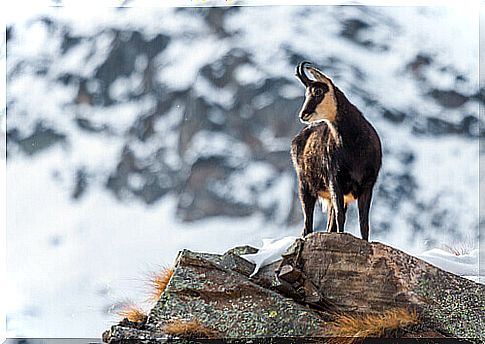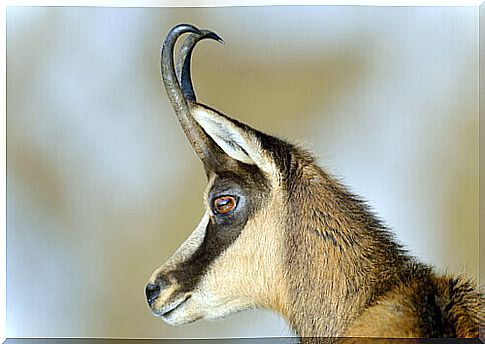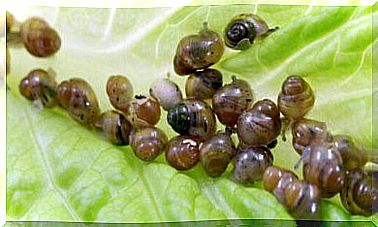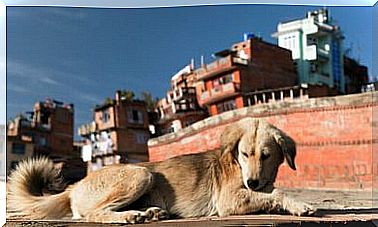Suede: Food And Customs

High mountain areas can seem like inhospitable places to live. But, in fact, for many specimens of flora and fauna, they are the ideal habitat: this is the case of the animal in question, the chamois. Read on to find out more about this acrobat bovine.
Suede: taxonomy and classification
At the taxonomic level, chamois is classified within the genus Rupicapra. At first, there was only one species: Rupicapra rupicapra. Several genetic and morphological studies were needed to reach a consensus among the scientific community and consider two different species:
- Rupicapra rupicapra: name given to the chamois of the Alps and other European mountain ranges.
- Rupicapra pyrenaica: this is the chamois found in southwestern Europe.
These animals belong to the bovine group, a large group of mammals that includes the sheep, the bull or the bison, among others. Bovine animals are strict herbivores and also ruminants. That is, after eating the food, they regurgitate it to chew it again and fully digest it.
General features
We are talking about animals whose size is no bigger than that of a goat, as their height does not usually exceed 80 centimeters, while their weight varies between 20 and 30 kg.
These bovines have a small tail that, if added to the total length, makes them reach around 120 centimeters. They also have excellent eyesight as well as enviable hearing and smell. These characteristics help them to detect the danger quickly.

Unlike other bovine species , both male and female chamois have horns, which rise vertically from the head and curve, giving them the appearance of hooks.
Without a doubt, to be able to live and move in the heights, some kind of adaptation is necessary. In suede, this problem is solved by their hooves : thin and with a central pad that allows them to climb any type of surface.
Another feature that should be highlighted in these animals is their coat, which varies according to the season. During the summer, when the temperature is high, the hair covering your body turns red, with some whiter areas and a black line on the back. However, during winter, the coat becomes harder and thicker, and takes on a brown or blackish hue.
Suede feeding
As mentioned above, they are strict herbivorous animals: their diet includes grass, herbaceous plants, sprouts, moss and even grasses.
These eating habits also vary according to the time of year : during the summer, the chamois prefers to graze in areas with greater abundance of grass. When winter comes, it feeds on other types of vegetation, as grass usually becomes sparse.

Habitat and customs
Suede is an animal used to mountainous areas, especially the green parts found in them. When summer and high temperatures arrive, these animals rise almost to the highest altitude, where they spend most of the day grazing, far from any danger.
With the arrival of winter, the chamois is forced to descend to the upper edge of the forest, towards the sunniest areas. These activities are usually done in groups, since the suede is a sociable animal that forms small groups of individuals. They carry out most of their activities during most of the day, as they are diurnal species.
They usually run away from unexpected encounters, as they are shy animals. The biggest dangers faced by suede are its predators – wolves, bears and humans – and avalanches, because, despite the agility shown by these animals, they can sometimes be taken by surprise.









